Shortbread Cookies
This post may contain affiliate links. Read my full disclosure policy.
The rich, buttery goodness of shortbread cookies is hard to beat. These delightfully crumbly cookies are perfect for the holidays or any time you’re in the mood for a sweet treat.
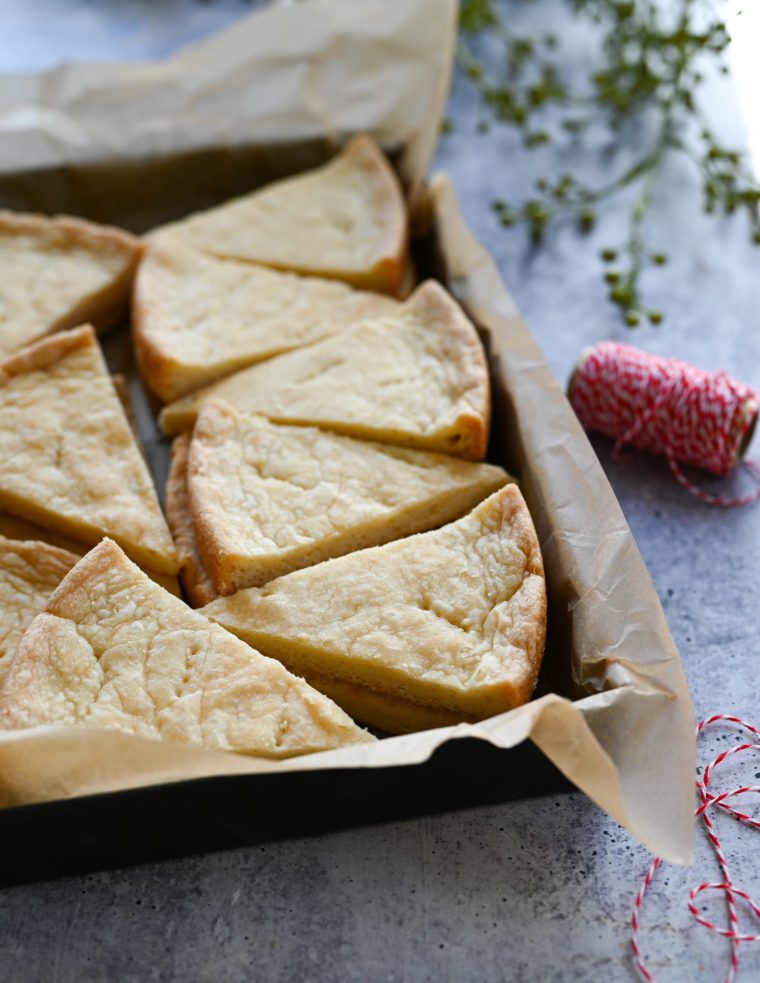
Buttery, crisp, and just sweet enough, classic shortbread cookies are loved for their crumbly texture and rich flavor. They get their name from the generous amount of butter in the dough, which creates that delightful “short” or crumbly texture. (Back in the day, “short” meant crumbly, and the term “shortening” refers to the fat used in making crumbly pastries.) Originally from Scotland, shortbread is often baked in rounds that resemble the sun and then cut into wedges, but you can also bake it in a square pan and cut it into rectangular “fingers.”
These shortbread cookies, adapted from King Arthur Flour, are traditionally served on the winter solstice, Christmas, New Year’s Eve, and New Year’s Day. Once cut, the cookies will keep in an airtight container for up to a month, making them a wonderful treat to bake and give away during the holiday season—or anytime you’re feeling generous, à la Ted Lasso.
“Amazing. Simple. Simply amazing.”
What You’ll Need To Make Shortbread Cookies
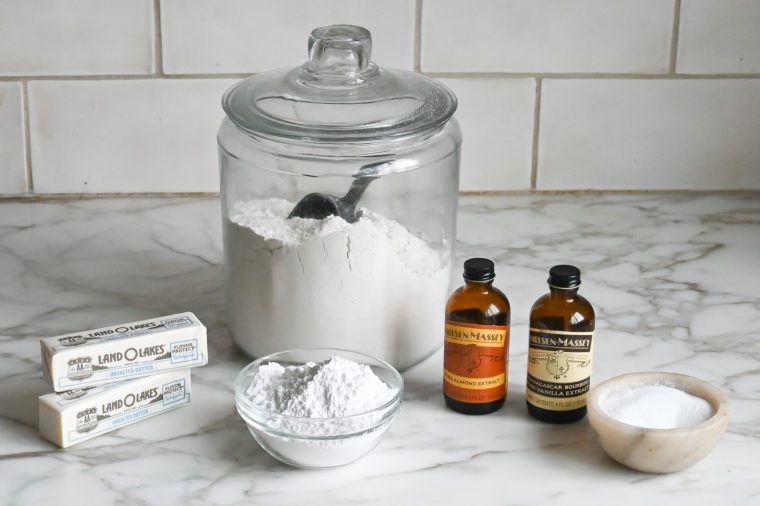
- Butter: Provides richness and flavor to the shortbread.
- Confectioners’ Sugar: Sweetens the shortbread and helps create its delicate crumb texture. Sometimes granulated sugar is used in shortbread, but I prefer confectioners’ sugar as it gives the cookies a softer, melt-in-your-mouth texture.
- Vanilla Extract: Adds a warm and aromatic flavor to the cookies.
- Almond Extract: Infuses a subtle nutty flavor that complements the other ingredients.
- All-Purpose Flour: Forms the base of the dough, providing structure and stability to the shortbread.
- Jump to the printable recipe for precise measurements
Step-By-Step Instructions
In the bowl of a hand-held or stand mixer fitted with the paddle attachment or beaters, combine the butter, sugar, salt, vanilla extract, and almond extract.
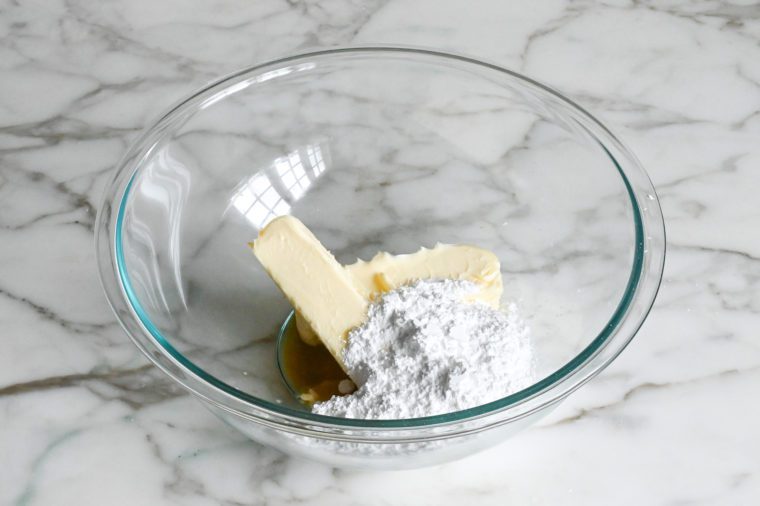
Beat until smooth and creamy, about 1 minute.
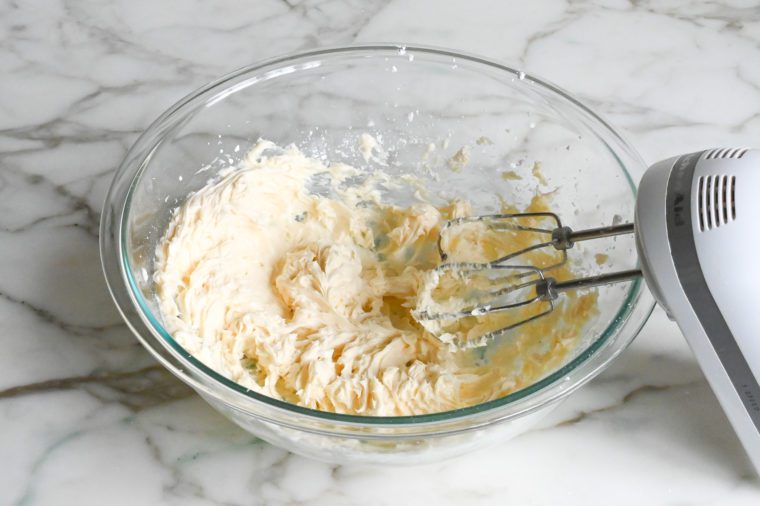 Add the flour.
Add the flour.
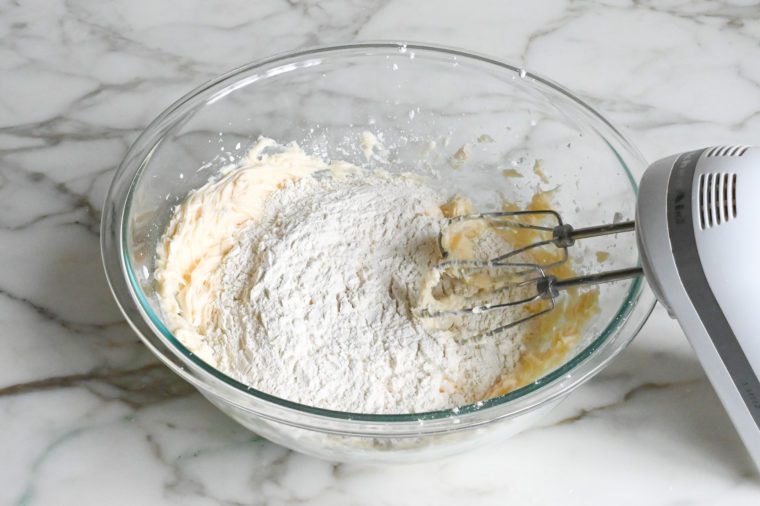
Beat on low speed until the dough comes together in a cohesive mass.
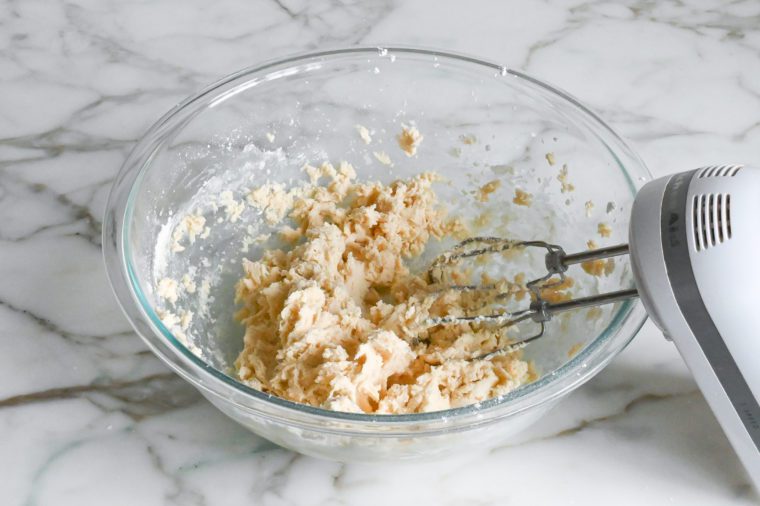
Divide the dough in half (if you have a scale, each half will weigh about 10.5 oz) and place each half in a greased, parchment-lined, 8-inch round cake pan.
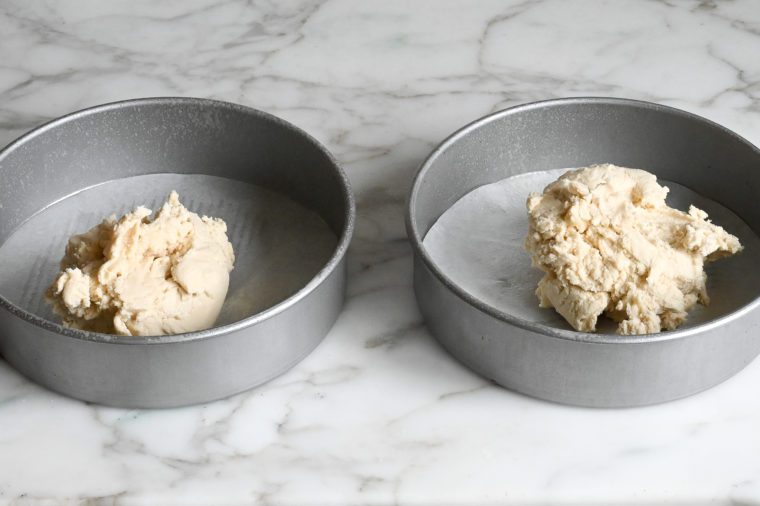
Dust your hands with flour and press each half into an even layer in the prepared pans. To smooth the surface, place a piece of plastic wrap over the dough and smooth with your hands. Use a fork to prick the dough all over in 1-inch intervals. This allows the steam to escape while the shortbread bakes.
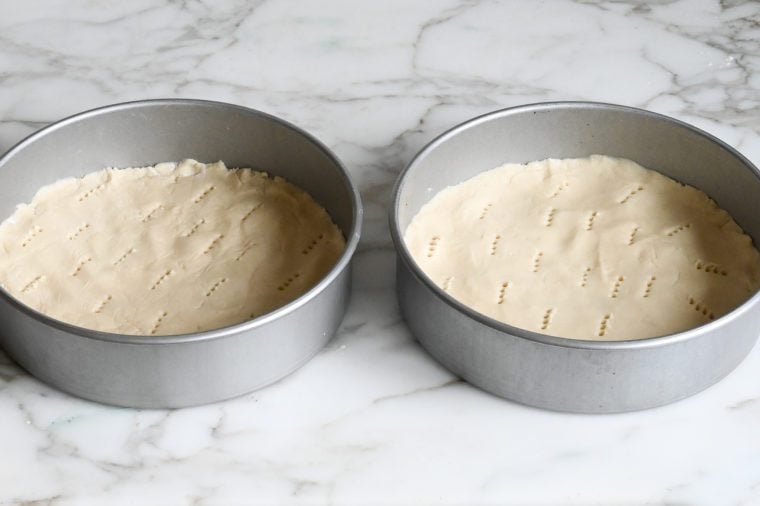
Bake the shortbread in a 300°F oven until it’s a light golden brown across the top surface, and a deeper golden brown around the edges, about 35 minutes. Shortbread should be baked low and slow so that it doesn’t take on much color in the oven. It should remain pale on top and turn slightly golden around the edges.
Remove the pans from the oven, and let cool on a wire rack for about 10 minutes.
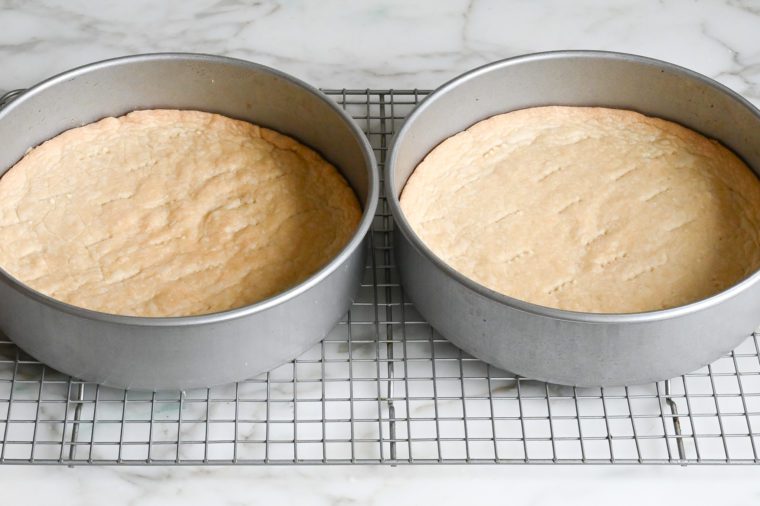
Run a blunt knife around the edges of the pan to loosen the shortbread, and then carefully turn each round out of the pans, using your hand to gently lower the shortbread onto a cutting board.
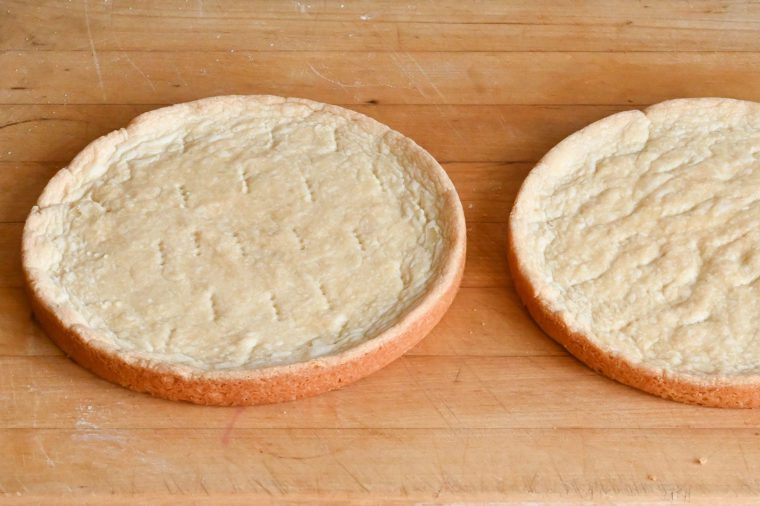
Using a sharp knife, cut each round into 8 or 10 wedges. (Do this while the shortbread is still warm; otherwise, it won’t cut easily and will crumble.)
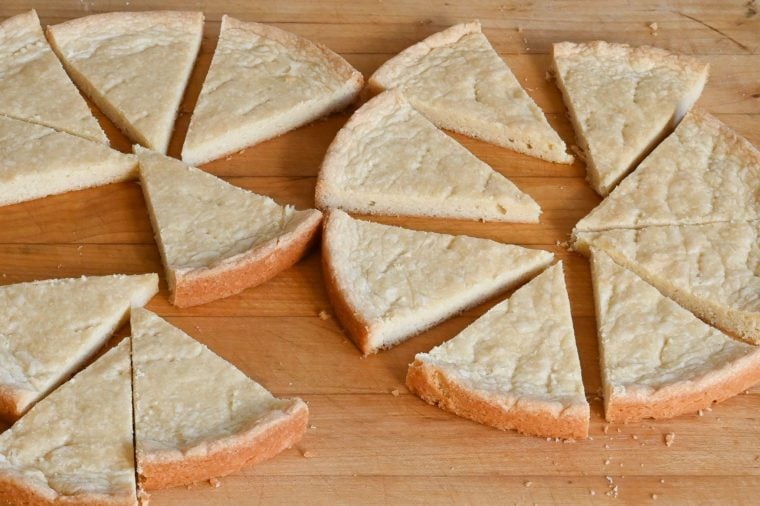
Let the shortbread cool on the cutting board, and then store in an airtight container.
I really enjoy classic shortbread as it’s delicious on its own, but there are also options for bringing a subtle twist to the flavor profile. For a bit of brightness, you might add lemon or orange zest, or for a hint of warmth, try cinnamon. Another way to enhance shortbread is by dipping it in melted chocolate or adding a light dusting of festive sprinkles or coarse sugar before baking, giving it just a touch of flair without taking away from its buttery simplicity.
Make-Ahead, Freezing & Storage Instructions
Shortbread cookies last nicely for up to a month stored in an airtight container at room temperature. This long shelf life makes them ideal for Christmas cookies because they can be enjoyed for weeks after the holidays. And either the dough or the baked cookies can be frozen for up to 3 months. To freeze the dough, shape it into 2 disks, wrap each securely in plastic wrap, and freeze in a sealable bag. When you’re ready to bake, thaw the dough overnight in the refrigerator. To freeze after baking, layer the cookies in an airtight container between sheets of parchment paper or aluminum foil. Thaw the cookies at room temperature before serving.

You May Also Like
Scottish Shortbread
The rich, buttery goodness of shortbread cookies is hard to beat. These delightfully crumbly cookies are perfect for the holidays or any time you’re in the mood for a sweet treat.
Ingredients
- 1 cup (2 sticks) unsalted butter, at room temperature
- 1 cup confectioners sugar
- ½ teaspoon salt
- 2 teaspoons vanilla extract
- ¼ teaspoon almond extract
- 2 cups all-purpose flour, spooned into measuring cup and leveled-off
Instructions
- Preheat the oven to 300°F and set an oven rack in the middle position. Lightly grease two round 8-in cake pans with nonstick cooking spray. Line the pans with parchment rounds, and then spray again.
- In the bowl of an electric mixer fitted with the paddle attachment or beaters, combine the butter, sugar, salt, vanilla extract, and almond extract. Beat until smooth and creamy, about 1 minute. Add the flour beat on low speed until the dough comes together in a cohesive mass.
- Divide the dough in half (if you have a scale, each half will weigh about 10.5 oz). Dust your hands with flour and press each half into an even layer in the prepared pans, dusting your hands with more flour as necessary to prevent the dough from sticking. To smooth the surface, place a piece of plastic wrap over the dough and smooth with your hands. Use a fork to prick the dough all over in 1-inch intervals to allow steam to escape while the shortbread bakes.
- Bake the shortbread until it's a light golden brown across the top surface, and a deeper golden brown around the edges, about 35 minutes.
- Remove the pans from the oven, and let cool on a rack for about 10 minutes. Run a blunt knife around the edges of the pan to loosen the shortbread, and then carefully turn each round out of the pans, using your hand to gently lower the shortbread onto a cutting board. Using a sharp knife, cut each round into 8 or 10 wedges. (Do this while the shortbread is still warm; otherwise, it won't cut easily and will crumble.) Transfer the shortbread wedges to a rack to finish cooling. Store in an airtight container at room temperature for up to 1 month, or freeze for longer storage.
- Freezer-Friendly Instructions: The shortbread dough can be frozen for up to 3 months. After mixing, shape the dough into 2 disks, wrap each securely in plastic wrap, and place them in a sealable bag. Thaw overnight before baking. To freeze the shortbread after baking, store in an airtight container separating layers with parchment paper or aluminum foil. Thaw at room temperature before serving.
Nutrition Information
Powered by ![]()
- Serving size: 1 wedge
- Calories: 152
- Fat: 9 g
- Saturated fat: 6 g
- Carbohydrates: 16 g
- Sugar: 6 g
- Fiber: 0 g
- Protein: 1 g
- Sodium: 60 mg
- Cholesterol: 24 mg
This website is written and produced for informational purposes only. I am not a certified nutritionist and the nutritional data on this site has not been evaluated or approved by a nutritionist or the Food and Drug Administration. Nutritional information is offered as a courtesy and should not be construed as a guarantee. The data is calculated through an online nutritional calculator, Edamam.com. Although I do my best to provide accurate nutritional information, these figures should be considered estimates only. Varying factors such as product types or brands purchased, natural fluctuations in fresh produce, and the way ingredients are processed change the effective nutritional information in any given recipe. Furthermore, different online calculators provide different results depending on their own nutrition fact sources and algorithms. To obtain the most accurate nutritional information in a given recipe, you should calculate the nutritional information with the actual ingredients used in your recipe, using your preferred nutrition calculator.

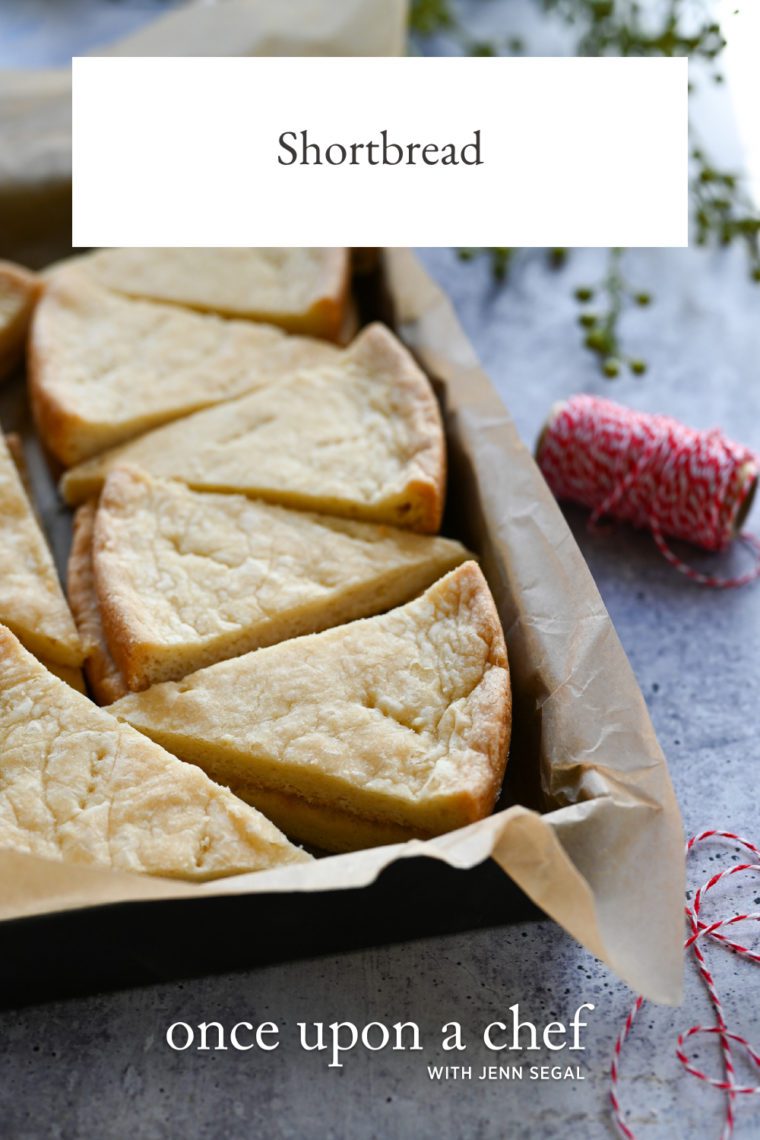
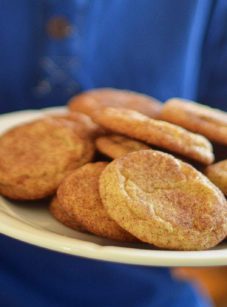
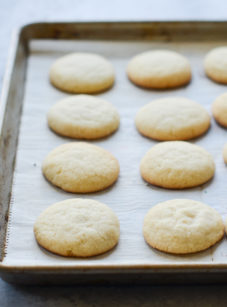
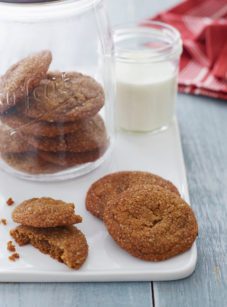
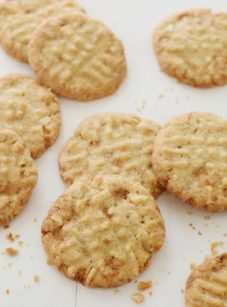
Another great recipe, Jenn. Deceivingly delicious cookies despite being super easy to make with simple ingredients! The almond extract is the star ingredient for me – it adds such a great depth of flavor.
Instead of doing two round pans could I use a 13×9 glass pan? I’m not much of a baker so I thought I would ask before I tried doing it. Thank you!
I haven’t tried them this way, but I suspect it should work. They will be a little thicker, so they may take a touch longer in the oven. Please LMK how they turn out!
Thank you for your quick response! I just made them this weekend and I decided to just use the two round pans. They were perfect. My boyfriend loved them. I will definitely be making them again soon.
These turned out great. Made them for a Burns night gathering, and they were gobbled up.
I think I forgot to add the stars!!!
I love the simplicity of shortbread: few ingredients, minimal handling, use a high quality butter and let it shine. I love this recipe (but omit both extracts) and bake the entire quantity in a two-piece 10-inch metal tart pan with a removable bottom. It makes for a thicker shortbread. I divide it into 16 pieces (petticoat tail style) and it is heaven.
A few helpful hints: I refrigerate the dough after it has been patted evenly into the tart pan. It makes it easier (and less messy) to gently mark off the 16 sections that I will later cut. Once the 16 sections are delineated, I then use a fork and a thin wooden skewer to create an attractive pattern of “vent holes”. I bake @ 300 for about 35-40 minutes, reduce oven temp to 275 and leave it for 10-12 more minutes. I find it needs to cool for about 15-20 minutes before I do the final cuts as these cookies are very fragile. Shortbread is a classic cookie, and this recipe is delicious.
I absolutely love this recipe! Nice and easy. I have made it for the holidays for the last 3 years and it always impresses. Lovely texture and great taste.
I have made the shortbread a couple of times but I still haven’t reached the point of total crispness. I used parchment paper on the bottom of my tins but as soon as I flipped the shortbread out I knew I should have kept them in a little longer – the underside was mottled golden with some areas being pale. The topside looked lightly golden and the edges darker. Do you think it is because I used parchment on the bottom or is it my mixing or simply my timing is off. I find with my oven I am keeping them in longer than the recipe states so I get a bit nervous that the bottom is burning. The edges are crisp but the rest is ever so slightly “cakey” Still delicious though:) I cut back the vanilla to half the amount, Any advice would be appreciated.
Hi Kathy, It sounds like your oven just runs a little cool and that they may need a tiny bit more time in there. 🙂
Thanks for responding so quickly, I will be a bit more daring next time. I must admit I am more of a cook than a baker so I always feel a bit intimidated when baking. In saying that, I am sitting right now with a cup of tea and one of your pecan squares……perfection!
I thought I would chime in here because the first time I made this recipe, I did not use parchment paper, and it came out perfect except for the fact that some of it got stuck to the pan. My next batch I used parchment paper, and it came out as you described. In fact, once it cooled, it was so hard, the shortbread was nearly inedible. I didn’t think the parchment was the culprit and thought it was because I hadn’t mixed the ingredients very well with my hand mixer. So I made a third batch using my standing mixture and the dough was much better (looked like the picture). I lined my pans with parchment again and the results were the same. I use parchment paper all the time (mostly for cookies), but if I think it about it, the cookies definitely cook faster without the parchment paper. All three times I made the shortbread, I baked it for 40 minutes, so I guess I need to increase the time to 45 minutes next time around OR not use parchment paper and live with some of the shortbread getting stuck to the pan.
omit both extracts if you don’t want “cakey” shortbread cookies. Been making short bread cookies for well over 60 years which consists of a mixture of salted butter, powdered or superfine/Berry sugar, and flour or at times an addition of cornstarch if I’m making whipped shortbread cookies, which are a dropped shortbread cookie. I and family are Brits and Scots who would never think of adding extracts to shortbread cookie mixtures as that would mean we’d no longer be making shortbread cookies, but sugar cookies instead.
Even KAF states extracts especially almond extract are optional. That means they rarely use them.
This recipe is so good! I went into it with no expectations because I don’t think I’ve ever made Scottish Shortbread before, and I made it exactly as written and would not make any changes. However, the one thing I learned is that I will definitely be lining my cake pans with parchment paper next time around because they did get stuck on the pan even though I used plenty of butter.
I made these last night. Unfortunately, I only have 8″ pans so I cooked them for an extra 10 minutes and they were PERFECT! I too left out the almond extract as I wanted a more pure Scottish shortbread flavour. Wonderful recipe! Thank you, Jen.
Could you use this shortbread recipe as the base for chocolate caramel slice ? Thank you.
Hi Jane, I had to look up a chocolate caramel slice to see exactly what they were and they sound very much like a recipe I have on the blog. You can find it here. If you want to make your own version, I’d go with the shortbread crust from that recipe. Hope that helps!